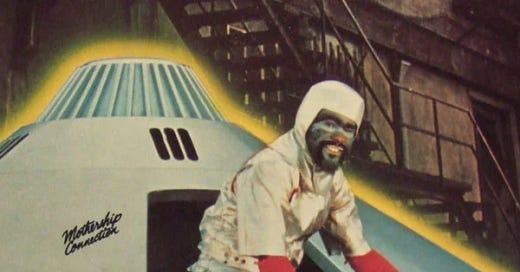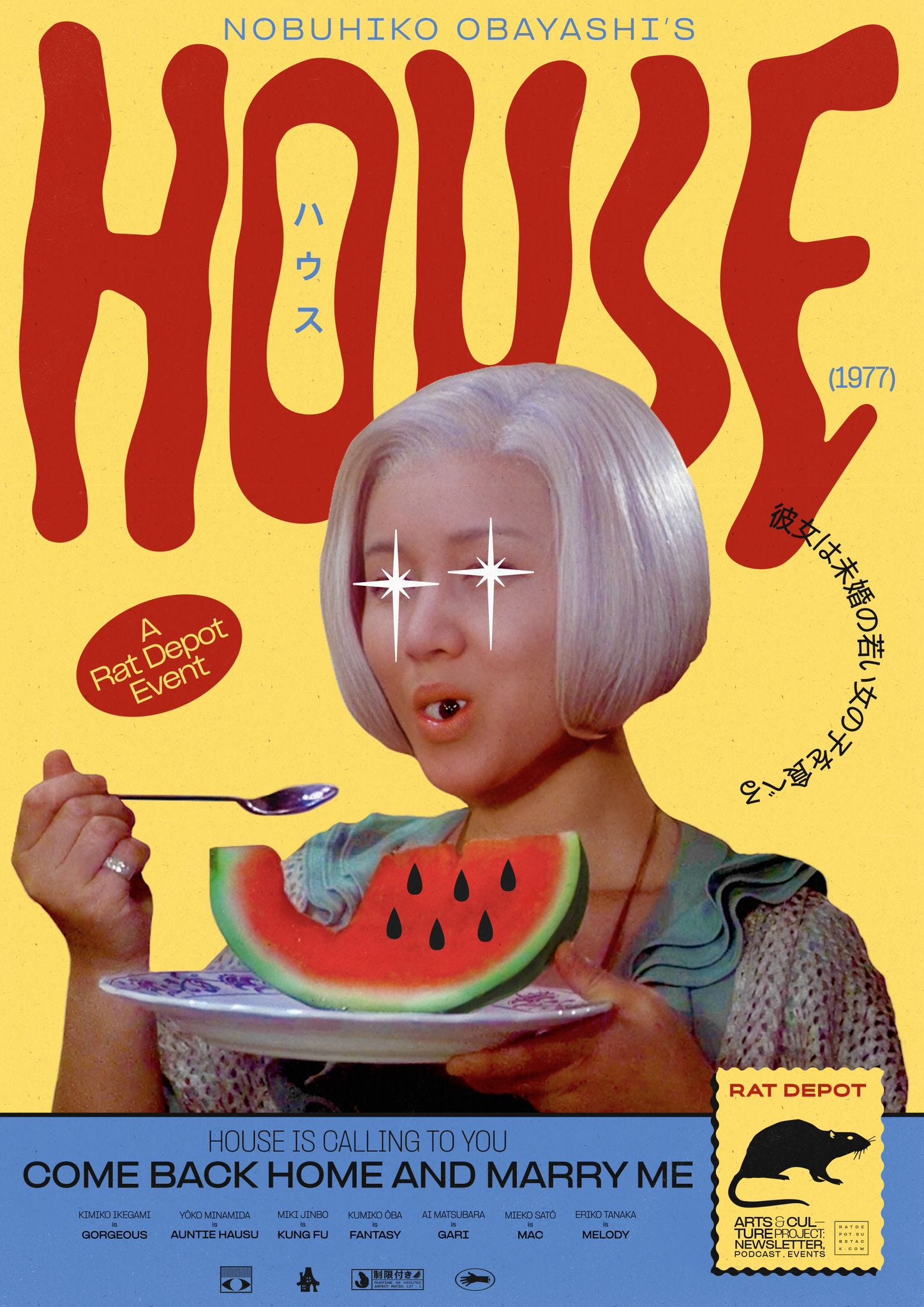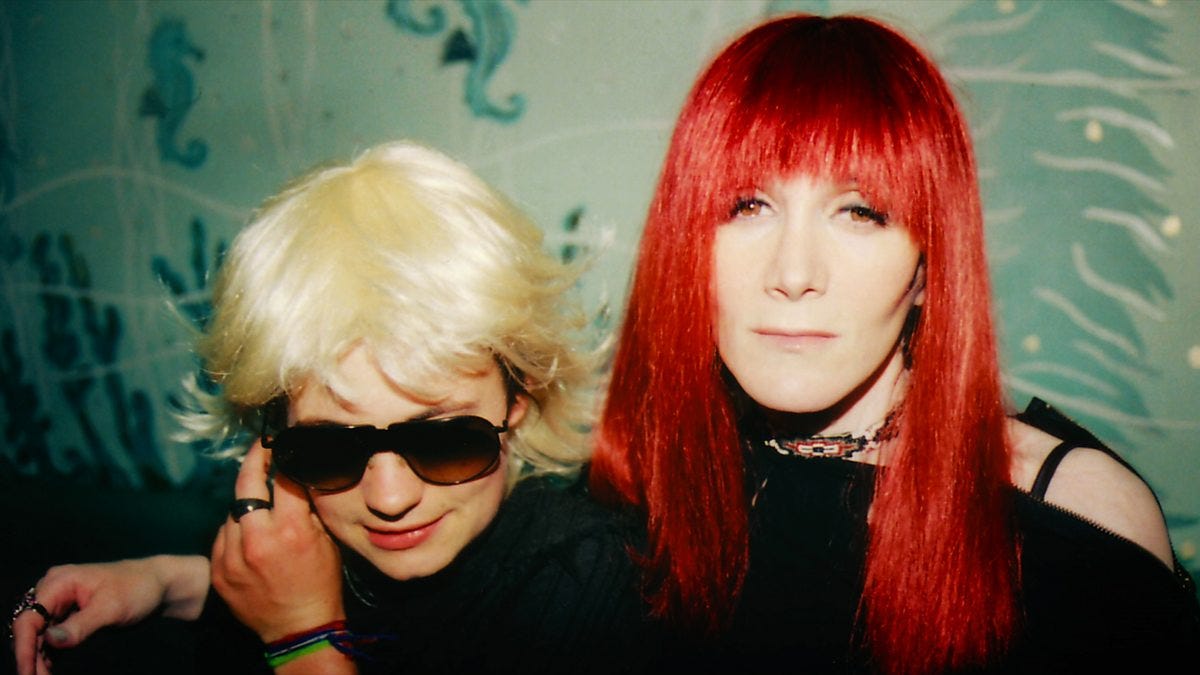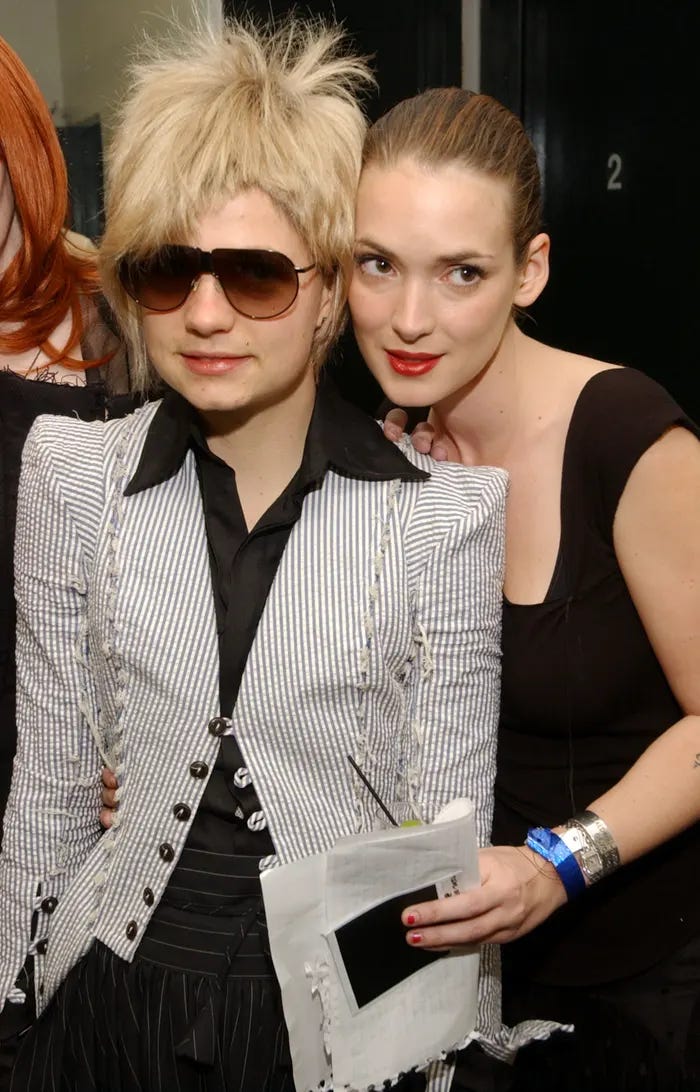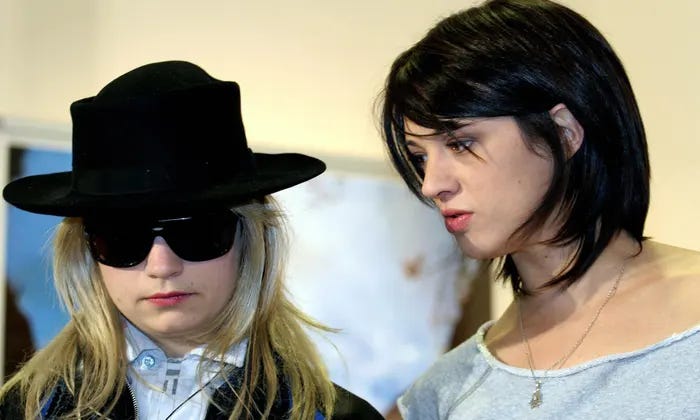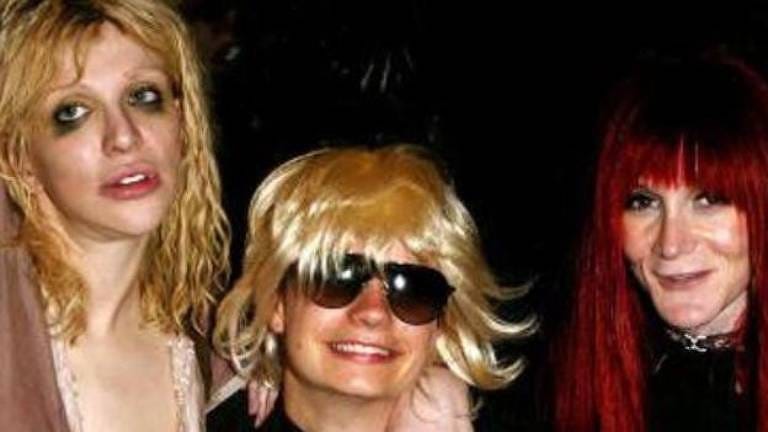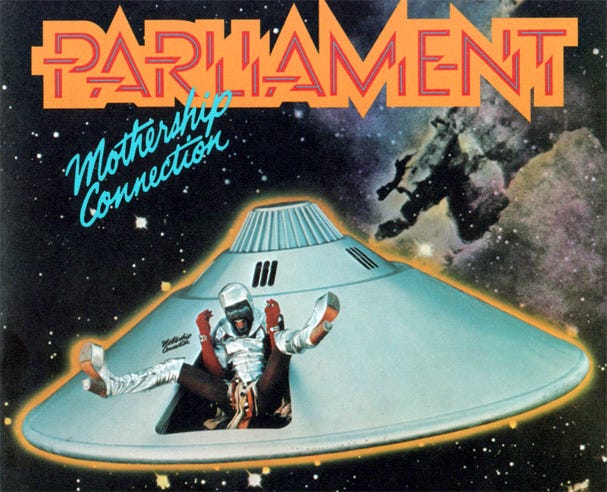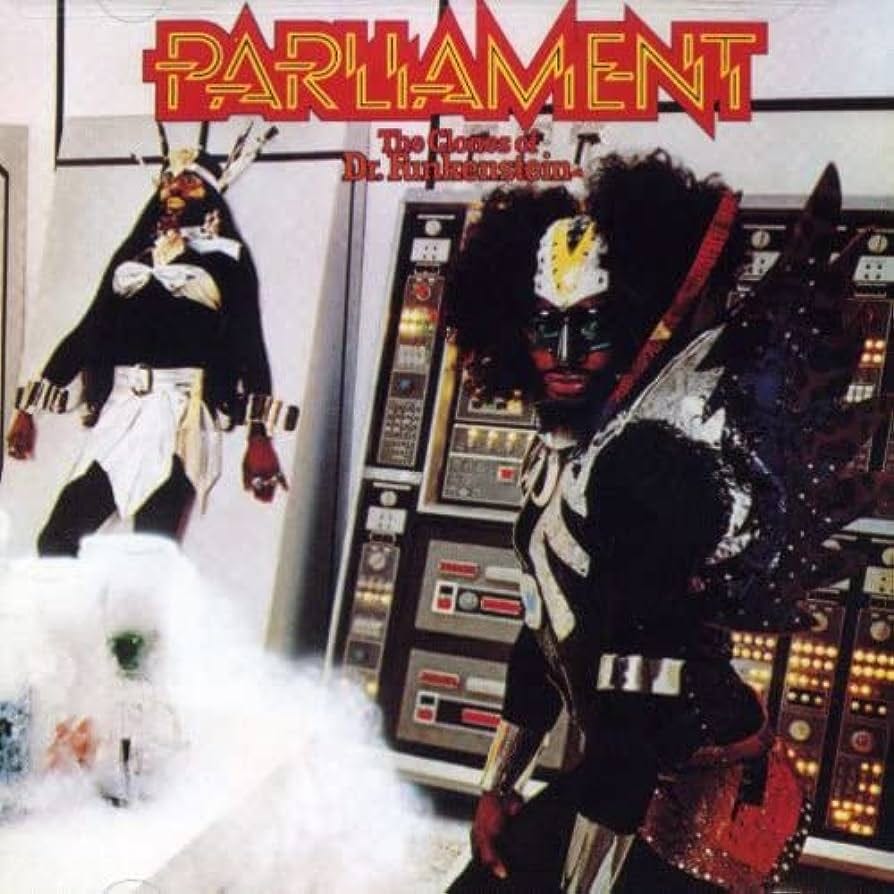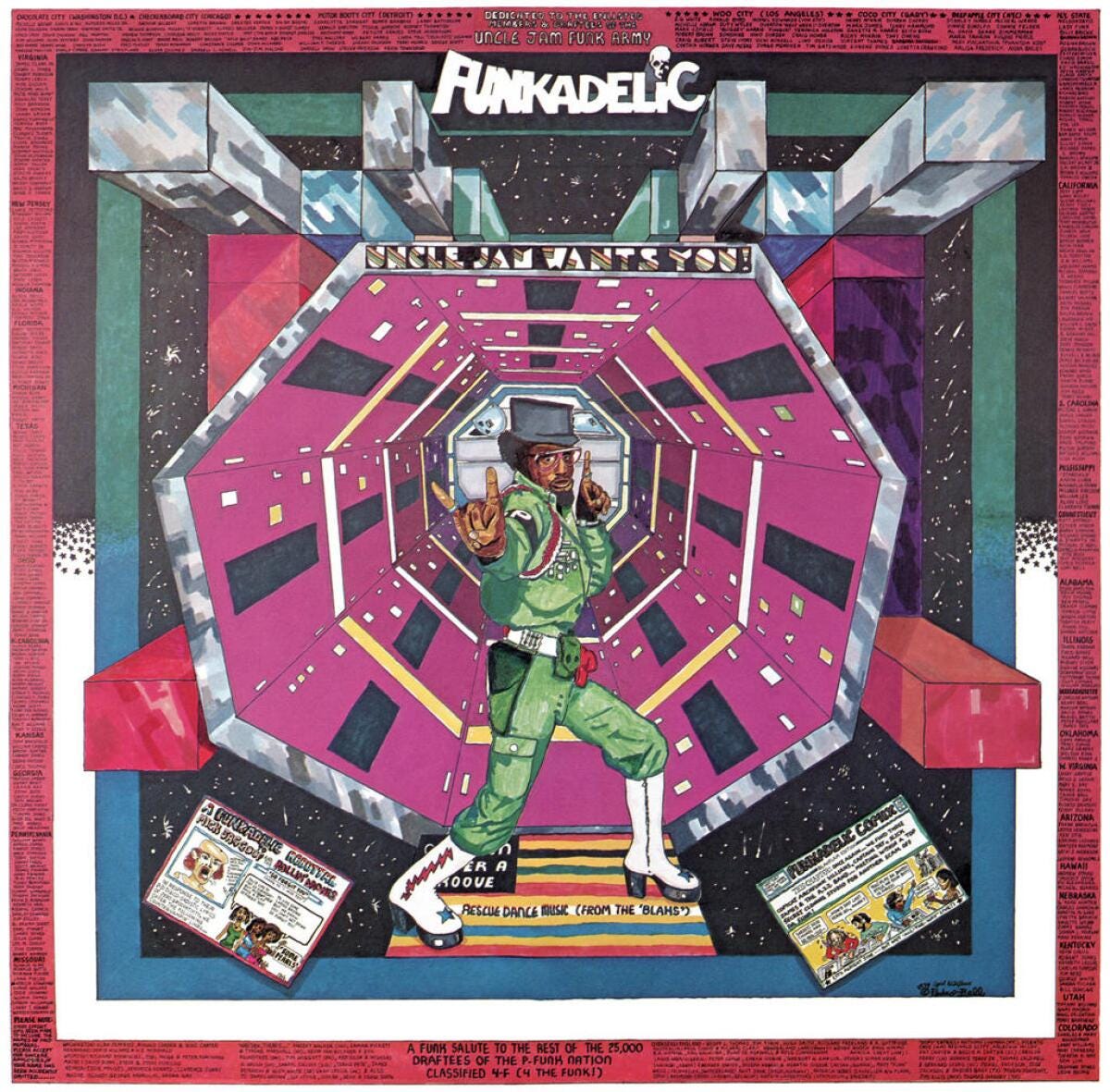We just hosted the first ever Rat Depot event, our presentation of House (1977). It was lovely to see some of you there and we’re thrilled to have pulled it off after weeks of planning. We’ve already discussed our next event and will be putting plans in motion very soon, so watch this space! And for new subscribers who may not have arrived via Instagram - we’re on there. Follow us for instant updates and links to shit and all that sexy stuff.
We also have a few A3, 300gsm posters left from the event which you can purchase directly from us. We sold them for £10 on the night and you can get one for £12 which includes UK shipping, or £20 all in for shipping every else in the world ever.
Hit this link to have a look and purchase one for yourself before they’re gone!
This week, let’s talk about characters. Personas, aliases, pen names, the avatars of artists who wished to remain anonymous or conversely wanted to be much larger than life, to build a mythology of self. Read on dear rats…
Jeremiah Terminator LeRoy
Oh boy. If you haven’t heard of JT Leroy, buckle up. In 2000, Jeremiah Terminator LeRoy published a book called Sarah. The book followed a young person and their mother, a “lot lizard”, another word for a sex worker who works along the truck stops in West Virginia. The book is fairly brutal, with graphic descriptions of abuse and exploitation. It was also claimed to have been inspired heavily by the lived experience of its elusive author. A national bestseller and the talk of the town at the turn of the century, LeRoy seemed to fit into a grungey subcultural wave in the vein of Harmony Korine, Nirvana, Gregg Araki and co. Rubbing elbows with all of the contemporary stars of the late 90s/early 00s, LeRoy was revered by artists such as Courtney Love, Gus Van Sant, John Waters, Winona Ryder, you name em. All was well!
LeRoy became known for his elusiveness, often answering interview questions by whispering in the ears of people next to him who could relay his answer. His past seemed inherently connected to the plot of Sarah and rumours flew around of LeRoy being HIV positive, transgender, the protagonist of Sarah itself, but no one knew the full truth. One of LeRoy’s closest confidants was Asia Argento, nepo baby supreme of giallo king Dario Argento stock. Asia Argento would go on to adapt LeRoy’s second book, The Heart is Deceitful Above All Things in 2004 with Hollywood heavyweights such as both Sprouse twins, Jeremy Renner and Marilyn Manson. A truly debauched blunt rotation. The book and film are also reportedly dogshit!
But why am I telling you all this? Well, it’s important to establish that LeRoy was by no means an industry outsider, with film deals being rolled out, a steady entourage of adoring celebrity fans and a bestselling debut book, LeRoy was hot shit, a known entity. He also wasn’t a real person. LeRoy was in fact, at one time nobody at all, and then three people at once. In the first instance a pen name for author Laura Albert, LeRoy was a male persona or ‘avatar’ to use Albert’s own words. JT “was asbestos gloves to handle material I otherwise could not have touched”. Just simple stuff like, being gender fluid, or a child sex worker, or a victim of abuse for example. But the JT we see in pictures is not Laura Albert, but Savannah Knoop, Albert’s relative-in-law through her husband Geoffrey Knoop.
So by the time LeRoy and Argento were dating, LeRoy had become a performance of a character created by Albert, brought to life by Knoop. The picture becomes even more complicated as the Knoop LeRoy - hereby known as LeKnoop - ‘hired’ Albert as his agent, a woman called Speedy who came pre-loaded with a terrible English accent. So now writer and agent travel everywhere together, a way of keeping the persona cohesive. Ironically, many of those who spent time around the LeDuo found Speedy quite annoying. The pair were reportedly a pain in the ass during the shoot of Argento’s adaptation, demanding imports of foreign fruit and luxury handbags. Somehow, LeKnoop managed to sustain the persona for about four years before it all came crashing down in 2005, shortly before Argento’s film came out.
When New York Magazine ran an article exposing LeKnoop, subsequent articles, interviews and scrutiny followed. Argento, reeled away feeling betrayed by the deception - though there are conflicting reports on whether Argento always knew or whether it came as some surprise. The budding filmmaker and actor has since been accused and counter-accused of sexual assault and generally being shit, just as an aside. Albert was sued for securing a contract for a film adaptation under false pretences. Albert and Knoop effectively parted ways, communicating infrequently ever since. And finally of course, the authenticity of Sarah was brought into question - did we know anything about Laura Albert at all?
The ‘truth’ as subsequently told by Albert is a mixed bag, a pick n mix of contradictions that I literally cannot pack into this email. Some things seem to ring true - Albert had a complicated relationship with gender growing up and an abusive relationship with her mother, which informed the novel Sarah. As a young adult, Albert would ring up child protection phonelines pretending to be a boy, making up stories that made her sympathetic to the people on the other line. It was a therapist that Albert used in the 1990s who encouraged her to write some of these experiences down, hence inspiring Sarah. Albert would also work on phone-sex lines during the 90s, further honing her ability to occupy multiple personas, something that had helped her survive a tumultuous upbringing.
To the public, LeRoy was the troubled, mysterious figure behind Sarah, a talented writer who had overcome much and forged a unique voice in the process. To Albert and those in the know, it was a performance that spiralled out of control, a distortion of a distortion of the truth. A person based on a book based on a person. The layers of fiction start to melt into each other, as documentaries and biopics have been released since, such as Author: The JT LeRoy Story (2016) and J.T LeRoy (2018), alongside the 2008 book Girl Boy Girl: How I Became JT Leroy, from Savannah Knoop themself. Each version of the story seems to grip onto different angles of the story, different contemporary accounts which have been warped by age or revision. I leave any further research to you, but leave you with some questions…
The discourse around authors writing about subject matter they aren’t personally close to is perennial. Hanya Yanagihara most recently faces accusations of writing trauma porn at the expense of a community they are not a part of. Green Book (2018), a film directed by a white man, wins best film at the Oscars as a white-saviour narrative where the main Black character has one purpose: to redeem the white protagonist. Both creators would argue that, if the writing is good enough and authentic enough, why not tell that story. I’m wading into different threads of argument here, about depictions of sexuality and race, but the underlying theme is artists appropriating the struggle of historically vulnerable communities to tell a story that is palatable to white audiences.
Do Albert or Knoop fit this description? Was Albert a fraud or a minor talent caught in a high profile identity crisis? It’s hard to discern what pieces of Albert ring true, but it seems likely that the author went through an upbringing not entirely dissimilar to the one presented to the world through the LeRoy persona and in Sarah. What perhaps invalidated whatever truths Albert managed to lay bare after so many years of pain, was her tragic inability to own them.
Starchild, Sir Nose, and Dr Funkenstein
As the principal member of the P-Funk collective, musician, singer, producer George Clinton is in the business of creating a unique and storied mythology to the music he helps make which lends itself to unique characters, personas that pop up across various projects from Mothership Connection (1975) with Parliament and the “extraterrestrial brothers”, to Mr Wiggles (I'm Mr. wiggles the worm, these are my ladies giggle and squirm) from Motor Booty Affair (1978) and far further afield. The two groups constantly invented characters and stories that fit within their vision of P-Funk.
My explanation of the lore here borrows initially from a radio show by Howard Brochette which goes into Clinton’s mythology and plays some bangers. If you don’t have time to listen and want the basics, that’s why I’m here baby!
Starchild, a character who was born from the Mothership Connection (1975) album, is an alien who pilots the mothership, his mission being to bring the ‘P-Funk’ to all of humankind. As such, he is a sort of prophet for the spirit of P-Funk, a term which stood to represent Parliament and Funkadelic, and the artistic output of both groups. As the song begins, Starchild exclaims:
Well, all right!
Starchild, citizens of the universe, recording angels
We have returned to claim the pyramids
As a form of AfroFuturism that makes connections between science fiction and history to explain and mythologise African ancestry, Starchild is both the essence of the past and the future, a bridge between worlds united by…you guessed it…funk. Starchild also provides an interest contrast to David Bowie’s Ziggy Stardust, an alien character introduced to the world three years prior on The Rise and Fall of Ziggy Stardust and the Spiders from Mars, who also acts as a messiah who can redeem humankind but ultimately falls to the pressures of celebrity. Starchild is also, cool as fuck and makes use of face paint in bright colours just as Ziggy did (below)
By comparison, Sir Nose D’voidofunk is an absolute travesty. We all hate him! Boo, hiss! Inspired by The Pinocchio Theory (1976) from Bootsy’s Rubber Bands, a band that also featured Parliament member Bootsy Collins, the song is about a man whose nose gets longer and longer the more he ‘fakes funk’. Whereas Starchild is a true child of the P-Funk, Sir Nose is an imposter who wouldn’t know funk if it punched him on the uh, nose. He looks cool as fuck though so…
Sir Nose is often found on stage during P-Funk gigs, dancing around in an outfit such as this. ‘Sir Nose’ written across the length of his snozz along with the ‘Nose’ crystal belt…it’s a look, almost out of Venetian theatre.
Next up is Dr Funkenstein, a character inspired by Clinton’s own fascination with the sci-fi concept of cloning. Coming out less than a year after Mothership Connection, the 1976 album The Clones of Dr Funkenstein had a different look and sound, leaning more into a less celestial disco funk accompanied by a good amount of horns. The outfits on the album cover are perhaps coincidentally reminiscent of then upcoming band Kiss, who achieved their first top 40 single in 1975. Dr Funkenstein is no villain however; his mission is to create clones of his perfect self in order to preserve funk, dedicated to “the preservation of the motion of hips”. Funkenstein helps produce the clones, the ‘Children of Production’ who are the future, a ‘timebomb’ that will wake society up from its malaise (lil Jimmy Carter reference for ya).
Leaning gently into contemporary discourse on drugs (or the war on such. Lil Nixon reference for ya), Funkenstein states that “the bigger the headache the bigger the pill / They call me the big pill”. The remedy to society’s sickness is, of course, P-Funk. Just like Starchild, our doctor broadcasts directly from the mothership, providing a connection to the first album and its political theming.
The rich colours and design of these characters were complimented brilliantly by artist Pedro Bell, who designed the vinyl inserts and album covers for Parliament, Funkadelic and George Clinton and was grossly underpaid for such amazing work. Bell had a formative role in establishing the characters of P-Funk as intergalactic heroes, often painting the covers before he had heard any of the music, working only with a title. While I’ve run out of space to discuss Bell here, tune into the next podcast episode to hear more about the artists career.
The list of characters goes on, with characters such as Mr Wiggles, Uncle Jam, the Funkateers who didn’t make the cut in this letter. In each of these characters though, George Clinton and Pedro Bell provided a colourful gateway into the politics of the P-Funk projects and built a rich story that helped cultivate a global fanbase who enjoyed such an optimistic, joyous vision of the future.
That’s all folks! Hope you enjoyed this one, I had a lot of fun writing it and there’s so much more to both the stories discussed here, maybe fall down the rabbit hole yourself and let me know where you end up? I’ll be back soon with some more sauce. Until then, be good.
Love,
Paulie xoxo


